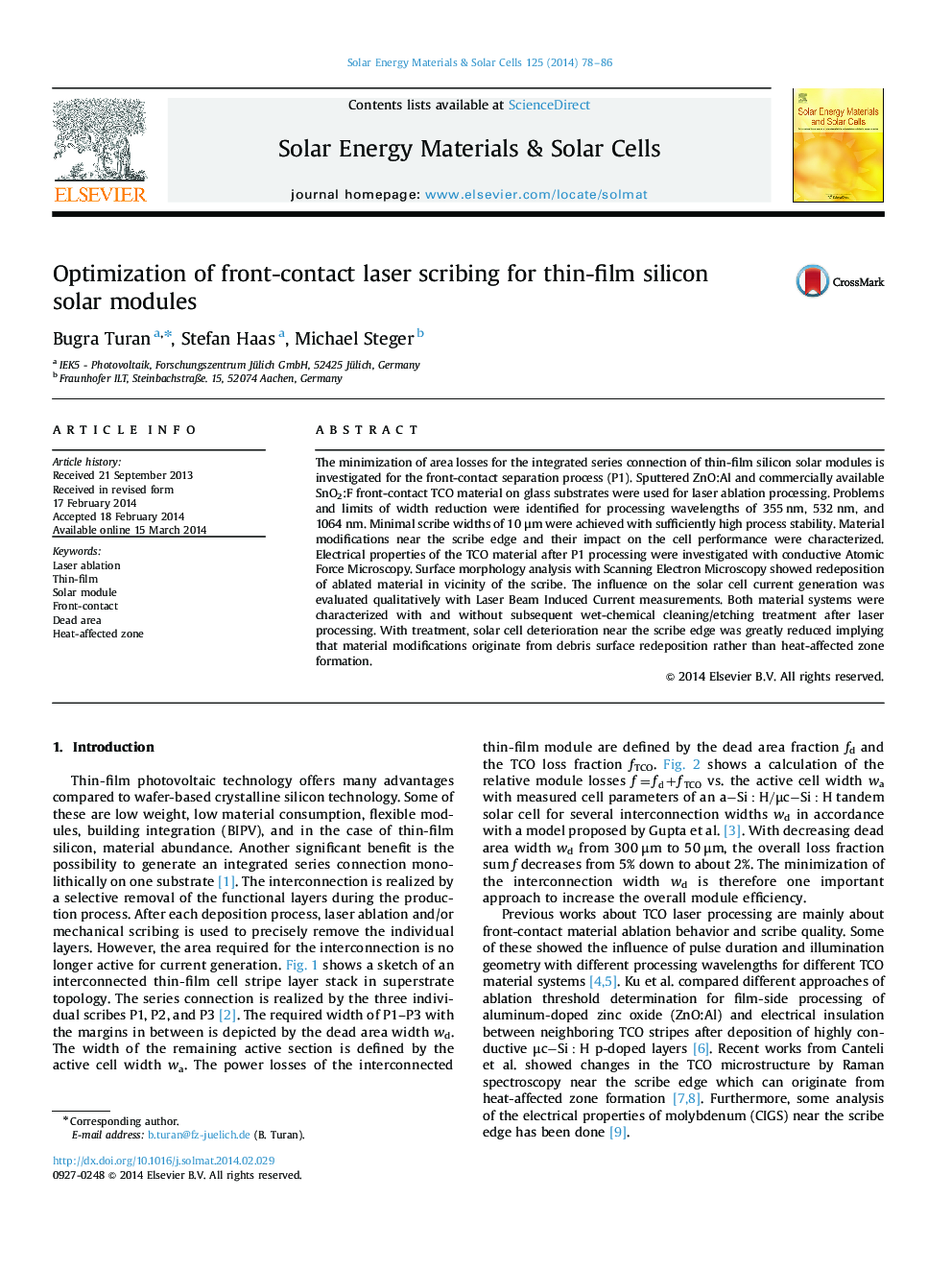| Article ID | Journal | Published Year | Pages | File Type |
|---|---|---|---|---|
| 78086 | Solar Energy Materials and Solar Cells | 2014 | 9 Pages |
•Scribe width reduction for the front-contact separation of ZnO and SnO2 was studied.•High insulating scribe line width of 10μm was realized with high process stability.•Impact on TCO/solar cell properties near scribe edge was observed by c-AFM and LBIC.•Wet-chemical post-treatment is capable of complete removal of processing damages.•Influence on solar cell owed to debris redeposition not heat-affect zone formation.
The minimization of area losses for the integrated series connection of thin-film silicon solar modules is investigated for the front-contact separation process (P1). Sputtered ZnO:Al and commercially available SnO2:F front-contact TCO material on glass substrates were used for laser ablation processing. Problems and limits of width reduction were identified for processing wavelengths of 355 nm, 532 nm, and 1064 nm. Minimal scribe widths of 10μm were achieved with sufficiently high process stability. Material modifications near the scribe edge and their impact on the cell performance were characterized. Electrical properties of the TCO material after P1 processing were investigated with conductive Atomic Force Microscopy. Surface morphology analysis with Scanning Electron Microscopy showed redeposition of ablated material in vicinity of the scribe. The influence on the solar cell current generation was evaluated qualitatively with Laser Beam Induced Current measurements. Both material systems were characterized with and without subsequent wet-chemical cleaning/etching treatment after laser processing. With treatment, solar cell deterioration near the scribe edge was greatly reduced implying that material modifications originate from debris surface redeposition rather than heat-affected zone formation.
